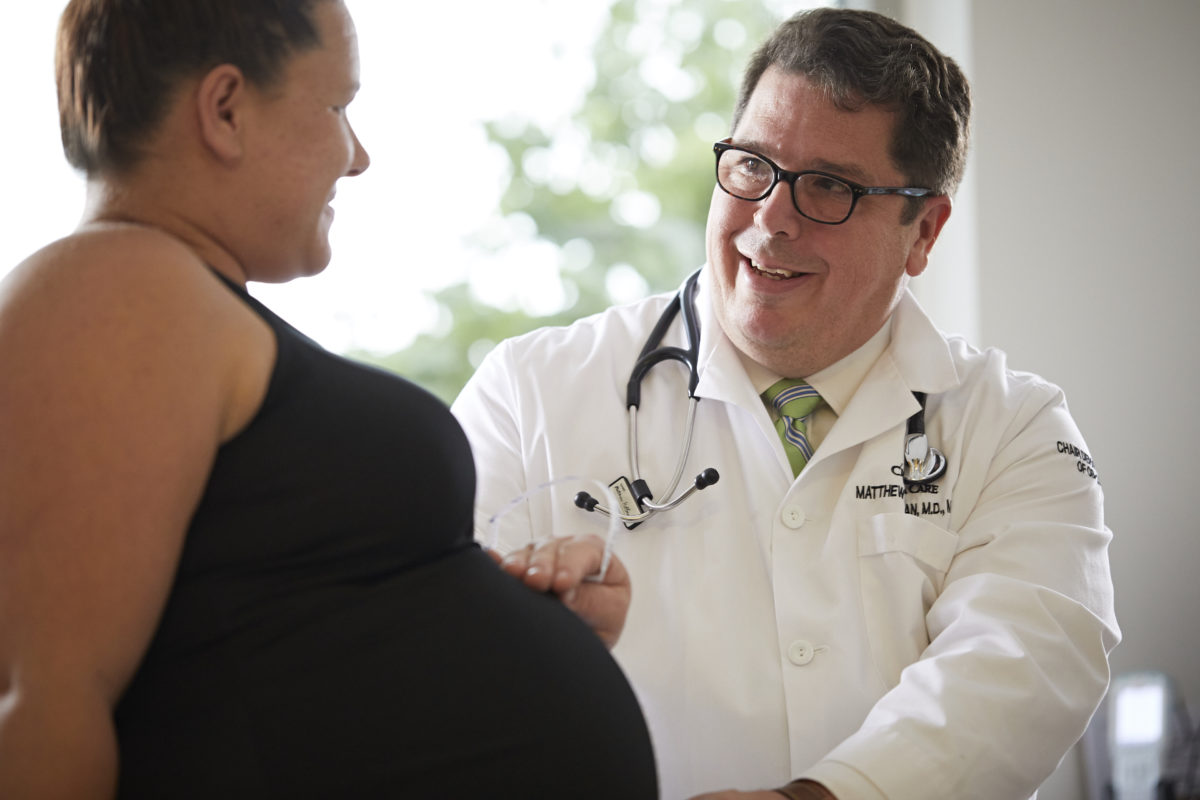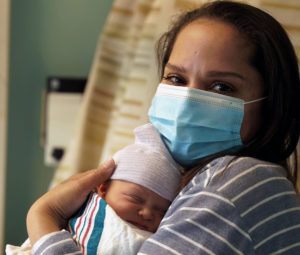Christiana Care Health System’s participation in a groundbreaking trial that compared induction of labor against natural birth has allowed the health system to begin putting the study’s findings into practice in months instead of years. The study, “A Randomized Trial of Induction Versus Expectant Management,” is known as ARRIVE.
The multi-center ARRIVE study, published in August in The New England Journal of Medicine, studied the deliveries of 6,106 first-time mothers who either had induction at 39 weeks or waited for birth to proceed naturally, up to 41 weeks.
Mothers who underwent induction had a Cesarean delivery rate of 18.6 percent compared with 22.2 percent for mothers who waited.
Matthew Hoffman, M.D., MPH, the Marie E. Pinizzotto, M.D., Endowed Chair of Obstetrics and Gynecology, said the findings represent an “acute about-face” from the previous standard of waiting for 41 weeks before inducing labor.
Reducing gestation time by two weeks may prevent complications that can come during this period, such as respiratory problems in the newborn and high blood pressure in the mother.
Piece of a whole
Christiana Care has joined several multi-center trials to study women’s and children’s health with the goal of contributing to medicine and advancing care for its own patients.
That includes the National Institutes of Health’s seven-year Environmental Influences on Child Health Outcomes study, which will track more than 50,000 children to see how their health in utero parallels their experiences later in life.
These research efforts also complement Christiana Care’s forthcoming state-of-the-art Center for Women & Children’s Health, which opens in 2020.
“The private rooms and other amenities of this new building are just part of the way we are giving babies the healthiest start we can,” Dr. Hoffman said. “Being part of these studies means the care we deliver in the new center will be informed by the latest research.”
Bringing the findings home
While C-sections can be life-saving, evidence suggests their overuse in the United States puts women at risk for complications in their current and future births. The ARRIVE study also found a decrease in preeclampsia, a dangerous complication involving high blood pressure, among moms in the induction group.
These key findings are already being translated into practice at Christiana Care, with early data suggesting a significant decline in C-section rates.
“Research is sometimes said to take 13 years to go from bench to bedside, but we were able to take that down to a month or two,” Dr. Hoffman said. “We had a chance to see these outcomes face-to-face, making them easier to accept and put into practice.”
Even after this study, induction is not recommended for every mother. Current medical practice is for a nurse midwife or obstetrician to have a conversation with women about how they want to give birth.
Because induction gives women more control over when they give birth, it negates one of the reasons women sometimes prefer C-sections.
“Control in decision-making and joint decision-making are important variables in a woman’s experience of birth,” Dr. Hoffman said.
Because a woman’s second birth tends to proceed similarly to her first, promoting more vaginal births has an echo effect on her subsequent births.
Christiana Care delivers about 6,000 babies a year and is using its volume as an opportunity to collect more data about induction. Among the questions they’d like to answer is whether the study’s findings apply to subsequent as well as first-time births.
Meanwhile, Christiana Care is improving the patient experience for moms undergoing induction. A text-based notification system that alerts mothers to come to the hospital when a bed is ready has reduced wait times by about 90 minutes, Dr. Hoffman said.


